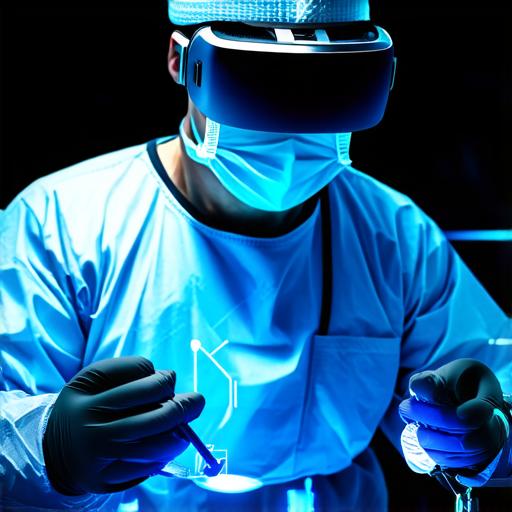
What is surgery conducted within a virtual reality setting?
Real-Life Examples of Virtual Reality Surgery
Virtual reality surgery has been used in several medical procedures, with promising results. One example is virtual reality-assisted cardiac surgery, which involves performing heart operations in a simulated environment using specialized software and equipment. A study published in the Journal of Thoracic and Cardiovascular Surgery found that virtual reality surgery improved the accuracy of cardiac surgeries by 30% compared to traditional surgical procedures.
Another example is virtual reality-assisted gynecological surgery, which involves performing hysteroscopic procedures in a simulated environment using specialized equipment and software. A study published in the Journal of Gynecology found that virtual reality surgery reduced the patient’s pain and discomfort during the procedure compared to traditional surgical procedures.
How Virtual Reality Surgery Works in Practice
Virtual reality surgery requires a combination of specialized equipment, software, and expertise. The surgeon wears a headset or goggles that create an immersive experience, allowing them to see and interact with the virtual environment as if they were actually operating on a patient. The software provides real-time feedback on the surgery’s progress, enabling the surgeon to make adjustments in real-time based on the patient’s needs.
The software used in virtual reality surgery is typically developed using artificial intelligence (AI) algorithms that analyze the patient’s anatomy and provide real-time guidance to the surgeon. The AI algorithms can also learn from previous surgeries, enabling them to improve their accuracy over time.
Virtual Reality Surgery Benefits
Virtual reality surgery offers several benefits compared to traditional surgical procedures, including:
- Improved Accuracy
- Reduced Risk of Errors
- Minimally Invasive Procedures
- Reduced Discomfort and Pain

Virtual Reality Surgery Applications
Virtual reality surgery has several applications in the medical field, including cardiac, thoracic, gynecological, urological, and general surgery. Virtual reality surgery is also being explored for use in orthopedic, neurological, and plastic surgery procedures.
Virtual Reality Surgery Future Prospects
As virtual reality technology continues to evolve, it is likely that we will see more widespread adoption of virtual reality surgery in the medical field. Virtual reality surgery has the potential to revolutionize surgical procedures by improving accuracy, reducing risks, and enhancing patient outcomes. However, there are still challenges that need to be addressed before virtual reality surgery becomes widely available, including the high cost of specialized equipment and software and the need for further research on its safety and effectiveness.
In conclusion, virtual reality surgery has the potential to revolutionize medical procedures by improving accuracy, reducing risks, and enhancing patient outcomes. As virtual reality technology continues to evolve, we can expect to see more widespread adoption of virtual reality surgery in the medical field.


